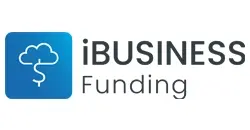Whether you need help covering day-to-day expenses for your small restaurant or want to expand into a franchise, you’ve got multiple restaurant funding options at your fingertips. Here’s a quick overview of the common types of small business loans that could be used for restaurant expenses.
Working capital loan
A working capital loan is a flexible form of restaurant financing that can cover expenses like daily operating costs, payroll, rent, supplies and more. However, a working capital loan isn’t ideal for long-term purchases, such as commercial real estate.
Rates and terms will vary, with some lenders requiring daily or weekly payments.
Business term loan
A small business term loan provides a lump sum of cash, allowing you to tackle more significant projects. Short-term loans typically need to be repaid within three to 24 months, whereas long-term business loans offer repayment terms up to 120 months.
Secured business term loans require collateral but typically have more attractive interest rates and flexible terms.
Business line of credit
A business line of credit is ideal for covering occasional gaps in your restaurant’s cash flow. Once approved, you can draw funds up to your credit limit as often as needed, only paying interest on the withdrawn amounts.
Similar to a term loan, a line of credit may require collateral. Interest rates can vary, with some lenders charging additional maintenance and withdrawal fees.
Equipment financing
Equipment loans provide funding for the essential equipment and machinery needed for your restaurant. Some lenders require a down payment, while others offer 100% financing with no down payment required. Since the equipment acts as collateral, equipment financing tends to have less strict eligibility requirements, although lenders can seize your purchased equipment if you default on your loan.
Recently established businesses can consider applying with alternative lenders that offer restaurant equipment financing for startups.
Commercial loan
If you need to purchase real estate for your restaurant or franchise, a commercial loan could help. To qualify, your restaurant typically must occupy at least 51% of the property you wish to finance.
You’ll also likely need to provide at least a 20% down payment, with the restaurant acting as collateral if you default on the loan.
SBA loan
The U.S. Small Business Administration (SBA) offers a partial guarantee and sets interest rate limits for SBA loans, making them an affordable option for restaurant financing. You’ll generally need a credit score of 650 or higher, though some lenders may have higher or lower requirements.
Your SBA options include:
- 7(a) loans: Up to $5,000,000 for general business purposes, with terms up to 300 months.
- CDC/504 loans: Up to $5,500,000 for commercial real estate or heavy equipment purchases, with terms up to 300 months.
- Microloans: Up to $50,000 for general business purposes, with terms up to 84 months.
You can apply through an SBA-approved lender.
Merchant cash advance
A merchant cash advance provides a lump sum of funds in exchange for a portion of your restaurant’s future income, including a set percentage of debit and credit card transactions.
MCAs can have lenient credit requirements, making them an ideal choice for those who expect a boom in sales in the coming months.
Invoice factoring
Invoice factoring is another way to access funding to catch up on unpaid bills. Basically, you sell your restaurant’s outstanding invoices to a factoring company to receive advance funding. The factoring company then collects customer payments on your behalf, subtracting a service fee before sending the remaining balance to you.
Since the funds are collected from the customers, their credit scores matter more than yours. But your business must have a steady flow of invoices for this to be a viable financing method.








